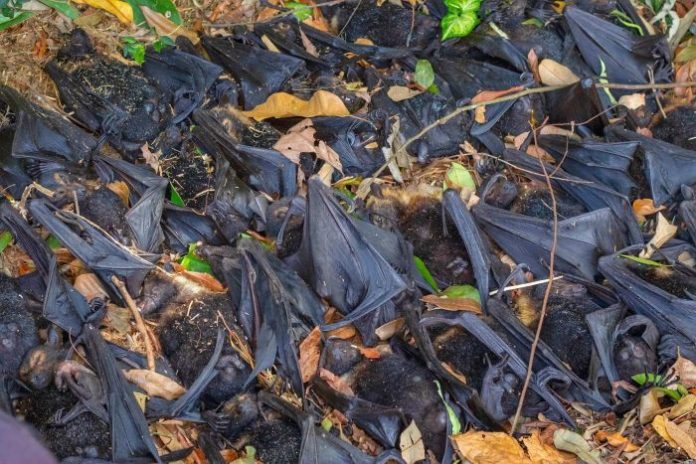The spectacled flying fox, named like this due to the light-colored fur around its eyes, can only be found in Australia in a small rainforest region of northern Queensland, where it helps pollinate native trees. It can also be found in Papua New Guinea, Indonesia, and the Solomon Islands.
The also known as spectacled fruit bats were unable to survive in temperatures which exceeded 42 degrees Celsius several days in a row last November in the city of Cairns, breaking the city’s previous record temperature for November by 5 degrees.
Locals saw bats plunging from trees into backyards, swimming pools, and other locations. “It was totally depressing,” said David White, one of the rescuers. Wildlife rescuers found surviving animals clumped together, usually on branches closer to the ground.
Ecologist, Dr. Justin Welbergen from the Hawkesbury Institute for the Environment (Western Sydney University) said it was the second-largest mass die-off of flying foxes recorded in Australia and the first time it had happened to this species. The first time was back in 2014 in the south-east when about 45,000 bats, mostly black flying foxes, died.
“The population size of the spectacled flying fox in Australia is estimated to be about 75,000 individuals, give or take, so for all intents and purpose that means we have lost close to a third of the entire species in Australia. Losing a third of the species on a hot afternoon I would argue certainly strengthens the case for both the Federal and Queensland Governments to consider lifting the species from ‘vulnerable’ to ‘endangered’, if not ‘critically endangered,” he stated.
Last week researchers concluded that about 23,000 spectacled flying foxes died at the end of last November, the number was reached through counting the dead animals in the seven flying fox camps. However, the deaths could be even higher, as many as 30,000, because some settlements have not been counted, according to Dr. Justin Welbergen.
In the past, mass deaths in the bat population were often associated with cyclones, but in the last few years, heatwaves have become a bigger risk. “We’re very concerned. It’s been a massive population decline for a species that isn’t under a great deal of pressure outside of these weather events,” stated Dr David Westcott, chairman of the government’s National Flying Fox Monitoring Programme.
While specialists are urging the International Union for Conservation of Nature’s Red List to deem these flying animals as endangered, some experts say that public antipathy to bats may affect conservation efforts. This is generally related to fears about contracting diseases from bats, and their noise in urban areas. Meanwhile, this week, amid a heatwave in New South Wales, authorities warned people against approaching bats due to reports of aggression.
Source: bbc.com










